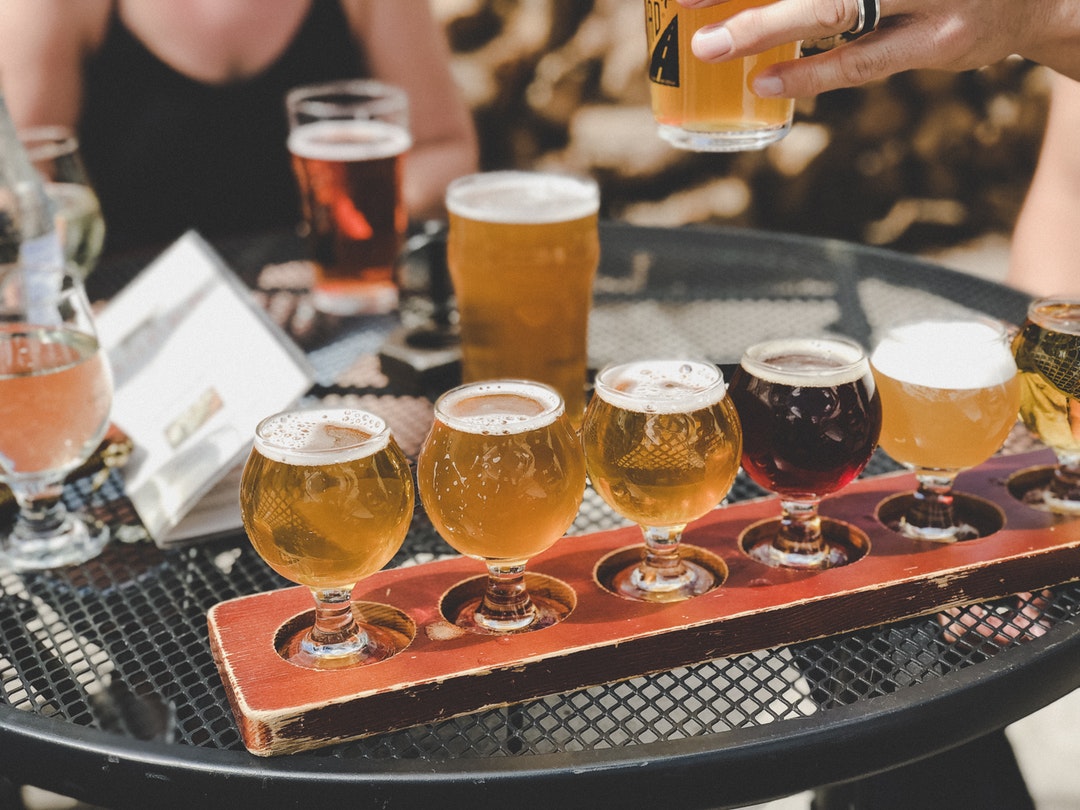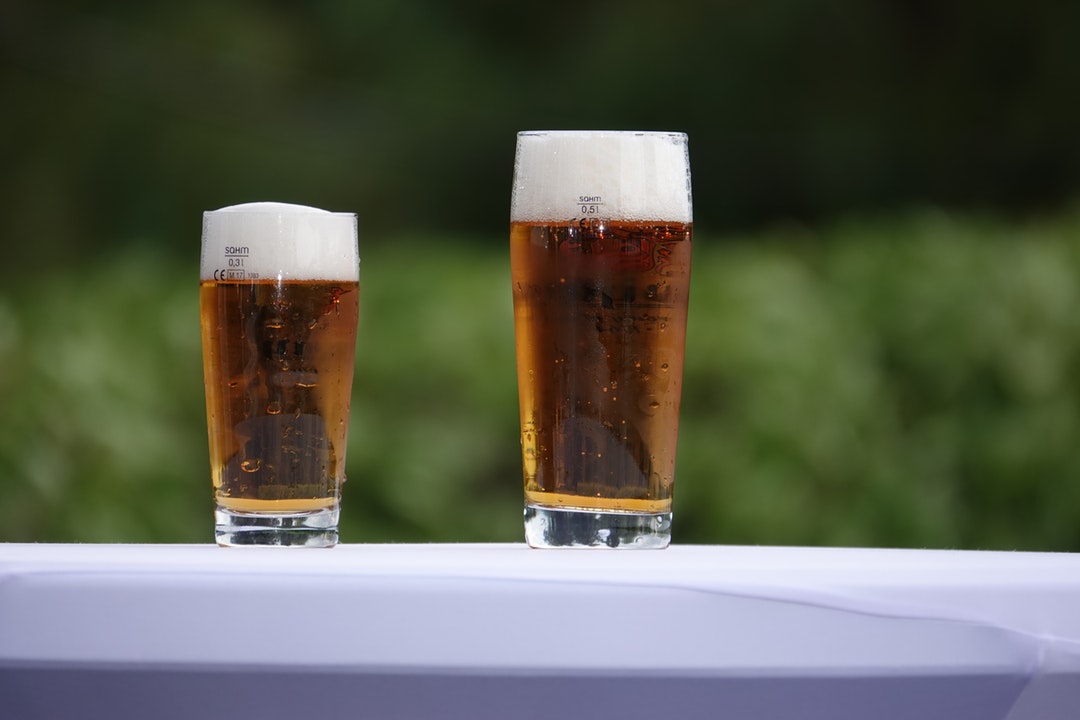Did you know that there are approximately 1.1 million homebrewers in America today? Or that they are responsible for brewing more than 1.4 million barrels of beer annually?
What’s even more surprising is that 40% of these homebrewers started dabbling in beer making no more than four years ago. While the learning curve can appear steep at first, brewers master their craft in a relatively short timeframe.
Of course, they need the right equipment to make this happen, and so do you. Not sure where to start when it comes to brewing a great pint? No worries. We’ve got you covered. Read on to learn more about the must-have equipment needed to homebrew beer.
Homebrewing 101
Although homebrewing can seem intimidating at first, don’t get overwhelmed. If you can make macaroni and cheese, you can learn how to brew your own beer.
In fact, classes on homebrewing abound. Heck, you can even download an app to help you craft the perfect beer.
As for ingredients, basic homebrewing requires four:
- Water
- Yeast
- Grains
- Hops
It’s amazing what four ingredients can do, right?
Other basics to keep in mind as you begin homebrewing include making cleanliness and sanitary conditions a priority.
Both prove crucial throughout the brewing process. Otherwise, you’ll end up with a brew that tastes odd or smells like rotten eggs. Having the right equipment on hand will help ensure the hygiene of your home operation.
But before we delve more deeply into your equipment needs, let’s take a quick look at how the four ingredients above work together to make the perfect glass of beer.
The Makings of a Great Beer
Like other beverages, water is the primary ingredient in beer. It makes up approximately 95% of the beverage, so make sure you use a high-quality, filtered water source to avoid weird flavors.
Without yeast, you wouldn’t have beer. Yeast devours the sugar in your wort (pre-beer liquid) converting it into CO2 and alcohol. This process of conversion is known as fermentation.
Depending on the recipe that you follow, you’ll either use whole grains or a malt extract to craft your homebrew.
Barley proves the most popular choice for the former or “all grain” method. That said, some people prefer wheat, corn, rice or sorghum.
The second method mentioned above, the extract method, uses malt. What’s malt? A mixture of soluble starches and sugar that’s prepared for fermentation.
Finally, think of hops as what flavors your home-brew and gives it richness and depth. When it comes to hops, the wide variety of flavor profiles proves truly remarkable.
Hops also work to balance out the sweetness that results from fermentation. Besides the variety of flavors that it brings to beer, hops also inhibit bacteria.
Three Fermentation Methods
While you might be shocked at how simple homebrewing proves in terms of ingredients, you have an almost limitless number of possibilities when it comes to how complex and flavorful your brew can get.
Although the base remains fundamentally the same, three fermentation methods have a huge impact on the outcome. Each of these methods is determined by the type of yeast used during the fermentation process.
The three fermentation types include:
- Ales
- Lagers
- Wild and Sour Ales
Ales refer to beers made with yeast that ferments at the top of the brew. Lagers refer to beers made with yeast that ferments at the bottom of the mixture.
Finally, wild and sour ales use spontaneously fermenting yeasts. This gives wild and sour ales their unique flavors and textures.
These three fermentation processes provide the palette for the homebrewer’s craft. Beyond that, how you combine ingredients and types of fermentation will affect the overall outcome.
Each one significantly impacts the aroma, consistency, and taste of the beer.
But your options as a home brewer don’t stop there. You also have two distinct brewing processes from which to choose.
Two Brewing Methods
When it comes to brewing methods, you have two options: the all grain brewing method and the extract brewing method.
Let’s explore the pros and cons of each brewing method. After all, each one has a huge impact on the brewing process as well as the final product.
The All Grain Brewing Method
The all grain brewing method involves a process known as mashing. Beer mashing is not to be confused with potato mashing. In fact, it doesn’t even require elbow grease.
That said, mashing is a labor-intensive, time-consuming process. And it proves essential to all grain brewing because it converts the starches that naturally occur in the grain into sugars that can then be fermented.
How does mashing work? It requires soaking your grain of choice in cold water. Soaking the grains allows the starches to naturally release.
These starches then get broken down by enzymes in the grain. This decomposition process converts starches into sugars.
Once mashing has occurred, you’ll need to “sparge” the grains. Although the term sounds foreign, don’t let it scare you. Sparging simply refers to rinsing or extracting the sugars from the grain so that the brewing can begin.
The Extract Brewing Method
If you’re feeling a bit nervous about mashing and sparging, then the extract brewing method represents your best and easiest bet.
Basically, somebody else handles the work for you. Then, they package the byproduct as a liquid or dry malt extract. You purchase these as a home brewing kit. And, voilà, you skip over the mashing step and right on to actual fermentation.
That said, the extract brewing method comes with its downsides, too. First, it limits your ability to customize beer flavors based on malts. Second, the liquid or dry malt extract that you purchase will cost more money.
The Right Equipment for the Job
When it comes to successfully brewing the perfect beer, you can’t go about it in a haphazard way. It requires the right know-how and specific equipment.
So, what exactly do you need? Here’s a rundown of what to purchase:
- Brew kettle
- Burner
- Wort chiller
- Fermenter
- Airlock
- Siphon with tubing
- Cleaner
- Sanitizer
- Hydrometer
- Thermometer
- Keg tap
Yes, this looks like a lot of equipment, and it requires an initial investment. But it’ll pay off in excellent brews down the road.
Although you may think of home brewing as a hobby, don’t cut corners when it comes to the right equipment. Otherwise, you’re liable to have a mess on your hands.
A Brew Kettle and Burner
No matter which route you choose to go with home brewing, you’re going to need a sturdy brew kettle. This brew kettle is where you’ll boil your ingredients to produce what’s known as wort (basically the pre-fermented beer mixture.)
Although you may feel tempted to save some money and start with a three- or five-gallon brew kettle, go with a 7.5-gallon kettle instead. Why? Because optimal beer-making requires boiling as much wort as possible.
What’s a good rule of thumb when choosing the kettle size? Beer-making aficionados recommend going twice as large as your actual batch size. That way, you’ll avoid boil overs and potential messes.
You should also give the heat source that you use for brewing some consideration. Once you start to delve into big batches, your stove top simply won’t cut it.
Instead, consider investing in a 72,000 BTU burner to maintain the optimal temperature during the initial boiling process.
A Wort Chiller
After you’ve boiled the wort, you need to cool it quickly. Otherwise, you risk the introduction and growth of bacteria and airborne yeast, especially when it’s in the 80 to 160 degrees Fahrenheit range.
Cooling your wort too slowly can also result in bitter beer and a cloudy appearance. So, invest in a wort chiller to avoid these potential complications. Otherwise, you risk turning your wort from the perfect base for beer into an epic disaster.
A Beer Fermenter and Airlock
After the wort cools, it must sit in a large container where it ferments. The fermentation process transforms wort into the bubbly, golden brew that people love to imbibe. Look for a fermenter with a 6.5-gallon or larger capacity.
Consider a conical fermentation system, which helps separate the sediment from the beer. This type of system allows you to bottle directly from your fermenter. Just make sure you look for a BPA-free tank.
During the fermentation process, you’ll need to keep the fermenter firmly closed. That said, you’ll also need a way to ventilate the CO2 produced during the fermentation process. Otherwise, pressure buildup could lead to big trouble.
This is where airlocks come in handy. They come in two basic models, the three-piece and S-shaped airlock, and look like a funny-shaped piece of plastic.
They allow otherwise sealed fermenters to release pressure as needed without compromising the fermentation process or purity of your brews.
A Siphon with Tubing
How do you move your wort (and later beer) from one vessel to the next during the brewing process? While you might see photos of brewers hand pouring, this is not recommended.
The much better approach remains siphoning. For optimal convenience, go with an auto-siphon that provides consistent vacuum suction.
A Cleaner and Sanitizer
When it comes to best practices for homebrewing, keep your equipment clean and well-sanitized. What’s the easiest way to do this? Use an unscented cleaner to keep your equipment spic and span.
As for sanitizers, these are used to get rid of microscopic organisms that can mess up your beer. Use your cleaners and sanitizers often to ensure hygienic brewing. Cleanliness will also give you peace of mind during the beer-making process.
A Hydrometer and Thermometer
During the brewing process, you’ll need to take consistent measurements when it comes to sugar content and liquid temperatures.
A hydrometer lets you measure the density of sugar in your wort. Monitoring sugar levels gives you more control over the fermentation process and lets you know when it begins and ends.
As for a thermometer, use it to monitor the temperature of the liquid in the brew kettle. Later, use it to make sure you’re cooling the wort quickly enough.
A Keg Tap
Once you’ve crafted a gorgeous beer, you want to drink it and share it, right? While some homebrewers bottle their final product, kegging remains the better option.
Not only does kegging cut out the tedious mess of individually bottling your brew, but it lets you control the amount of carbonation in your final pour.
Just remember to store your kegs out of the light and at a consistent temperature. You should also monitor them to maintain a level of pressure in the 10 to 12 psi range.
A good keg tap proves portable and allows you to enjoy a fresher beer with less waste. Look for one that’s made out of stainless steel and proves easy to install and clean after each use.
Successfully Crafting Your Own Homebrew Beer
Although there’s an initial learning curve and investment when it comes to a homebrew setup, the right equipment will make the process more convenient and successful.
Once you learn how to homebrew and feel more comfortable with the process, then you can start honing your craft by experimenting with a variety of different ingredients.
You can also change it up by trying different fermentation methods and brewing processes. Few hobbies prove more rewarding, especially when you start reaping the benefits of your own craft beer creations.
When it comes to equipment, don’t skimp on purchasing a suitably sized brew kettle. You’ll also want to purchase equipment that comes with extra conveniences such as a conical fermentation system and a portable keg tap.
That way, you’ll be able to easily share your creations as you gain mastery over the brewing craft.
Homebrewing for Beginners
Interested in learning more about the process of creating an excellent homebrew beer? Or, maybe you have more questions about the different kinds of craft beer and how to create them?
From lagers to ales and everything in between, the world of craft beers will blow your mind. Read on for your ultimate guide to understanding what you’re drinking and how to make it at home.






